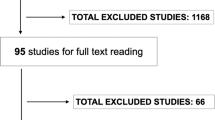Abstract
Background
Silent corticotrph adenomas represent a distinct pathological subtype of non-functioning pituitary adenomas that are traditionally believed to carry a more aggressive biological behavior and higher potential for recurrence.
Methods
We conducted a retrospective review of all silent corticotroph adenomas treated and followed at our institution over the last 10 years. We reviewed clinical, radiological and pathological features. The series was compared to a matched cohort of ACTH-negative, non-functioning adenomas to compare clinical, radiological and pathological features. Our results were compared to the literature.
Results
Twenty patients met our inclusion criteria. Fifty-six percent of the patients were females. Mean age was 51 years (range 24–78 years). Visual dysfunction was the most common clinical presentation (38 %). Thirteen percent of the cases presented with acromegaly secondary to double adenoma (silent corticotroph adenoma and growth hormone adenoma) and 13 % presented with pituitary tumor apoplexy. All the tumors were macroadenomas. Frank cavernous sinus invasion occurred in 31 % of the cases. The patients who presented with acromegaly did not achieve remission postoperatively. In the remaining patients, recurrence occurred in 14 % of the cases over a mean follow-up period of 41 months. Compared to non-functioning adenomas, silent corticotroph adenomas were more likely to bleed (p value 0.014) and have double adenoma (p value 0.047). There was no difference in recurrence rates between silent corticotroph adenomas and non-functioning adenomas (p value 0.647).
Conclusion
These results suggest that silent corticotroph adenomas have some unique features compared to non-functioning adenomas. Within the limits of our follow-up duration and sample size and our review of the literature, we would recommend that the traditional view to manage all silent corticotroph adenomas with adjuvant radiation should be reconsidered. We suggest adopting an initially more conservative follow-up surveillance and delay of upfront radiation until there is clear evidence of tumor recurrence.
Similar content being viewed by others
Abbreviations
- ACTH:
-
Adrenocorticotropic hormone
- CRH:
-
Corticotropin-releasing hormone
- CS:
-
Cavernous sinus
- GH:
-
Growth hormone
- IGF-1:
-
Insulin-like growth factor 1
- MRI:
-
Magnetic resonance imaging
- NFAs:
-
Non-functional adenomas
- SCAs:
-
Silent corticotroph adenomas
- UFC:
-
Urinary free cortisol
References
Baldeweg SE, Pollock JR, Powell M, Ahlquist J (2005) A spectrum of behaviour in silent corticotroph pituitary adenomas. Br J Neurosurg 19(1):38–42
Black PM, Hsu DW, Klibanski A, Kliman B, Jameson JL, Ridgway EC, Hedley-Whyte ET, Zervas NT (1987) Hormone production in clinically nonfunctioning pituitary adenomas. J Neurosurg 66(2):244–250
Bradley KJ, Wass JA, Turner HE (2003) Non-functioning pituitary adenomas with positive immunoreactivity for ACTH behave more aggressively than ACTH immunonegative tumours but do not recur more frequently. Clin Endocrinol (Oxf) 58(1):59–64
Cho HY, Cho SW, Kim SW, Shin CS, Park KS, Kim SY (2010) Silent corticotroph adenomas have unique recurrence characteristics compared with other nonfunctioning pituitary adenomas. Clin Endocrinol (Oxf) 72(5):648–653
Horvath E, Kovacs K, Killinger DW, Smyth HS, Platts ME, Singer W (1980) Silent corticotropic adenomas of the human pituitary gland: a histologic, immunocytologic, and ultrastructural study. Am J Pathol 98(3):617–638
Knosp E, Steiner E, Kitz K, Matula C (1993) Pituitary adenomas with invasion of the cavernous sinus space: a magnetic resonance imaging classification compared with surgical findings. Neurosurgery 33(4):610–617
Kontogeorgos G, Scheithauer BW, Horvath E, Kovacs K, Lloyd RV, Smyth HS, Rologis D (1992) Double adenomas of the pituitary: a clinicopathological study of 11 tumors. Neurosurgery 31(5):840–9
Kovacs K, Horvath E, Stefaneanu L, Bilbao JM, Singer W (1999) Two cases of pituitary Crooke’s cell adenoma without Cushing’s disease: a histologic, immunohistochemical, electron microscopic and in situ hybridization study. Endocr Pathol 10(1):65–72
Lopez JA, Kleinschmidt-Demasters Bk B, Sze CI, Woodmansee WW, Lillehei KO (2004) Silent corticotroph adenomas: further clinical and pathological observations. Hum Pathol 35(9):1137–1147
Nagaya T, Seo H, Kuwayama A, Sakurai T, Tsukamoto N, Nakane T, Sugita K, Matsui N (1990) Pro-opiomelanocortin gene expression in silent corticotroph-cell adenoma and cushing’s disease. J Neurosurg 72(2):262–267
Pawlikowski M, Kunert-Radek J, Radek M (2008) “Silent” corticotropinoma. Neuro Endocrinol Lett 29(3):347–350
Raverot G, Wierinckx A, Jouanneau E, Auger C, Borson-Chazot F, Lachuer J, Pugeat M, Trouillas J (2010) Clinical, hormonal and molecular characterization of pituitary ACTH adenomas without (silent corticotroph adenomas) and with Cushing’s disease. Eur J Endocrinol 163(1):35–43
Roncaroli F, Faustini-Fustini M, Mauri F, Asioli S, Frank G (2002) Crooke’s hyalinization in silent corticotroph adenoma: report of two cases. Endocr Pathol 13(3):245–249
Sahli R, Christ ER, Seiler R, Kappeler A, Vajtai I (2006) Clinicopathologic correlations of silent corticotroph adenomas of the pituitary: report of four cases and literature review. Pathol Res Pract 202(6):457–464
Scheithauer BW, Jaap AJ, Horvath E, Kovacs K, Lloyd RV, Meyer FB, Laws ER Jr, Young WF Jr (2000) Clinically silent corticotroph tumors of the pituitary gland. Neurosurgery 47(3):723–729
Webb KM, Laurent JJ, Okonkwo DO, Lopes MB, Vance ML, Laws ER Jr (2003) Clinical characteristics of silent corticotrophic adenomas and creation of an Internet-accessible database to facilitate their multi-institutional study. Neurosurgery 53(5):1076–1084
Yamada S, Ohyama K, Taguchi M, Takeshita A, Morita K, Takano K, Sano T (2007) A study of the correlation between morphological findings and biological activities in clinically nonfunctioning pituitary adenomas. Neurosurgery 61(3):580–584
Ueyama T, Tamaki N, Kondoh T, Kurata H (1998) Large and invasive silent corticotroph-cell adenoma with elevated serum ACTH: a case report. Surg Neurol 50(1):30–31
Conflicts of interest
None.
Author information
Authors and Affiliations
Corresponding author
Rights and permissions
About this article
Cite this article
Alahmadi, H., Lee, D., Wilson, J.R. et al. Clinical features of silent corticotroph adenomas. Acta Neurochir 154, 1493–1498 (2012). https://doi.org/10.1007/s00701-012-1378-1
Received:
Accepted:
Published:
Issue Date:
DOI: https://doi.org/10.1007/s00701-012-1378-1




